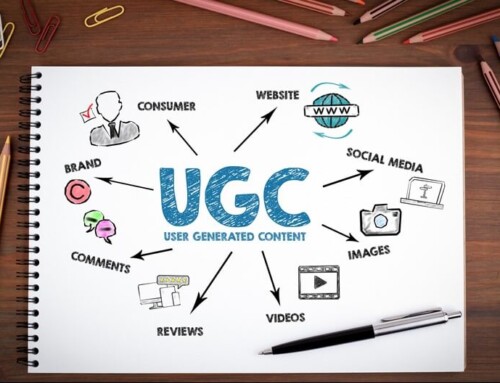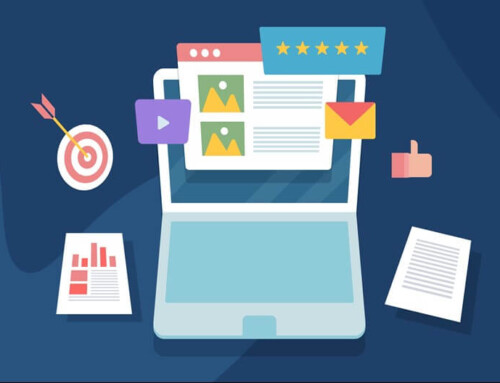Part 1 of 3
Prospecting is, of course, necessary for organizations to find new business. While marketing and advertising may recruit leads, salespeople should also continue to seek new opportunities. However, prospecting is hard work. In fact, nearly half (42%) of sales professionals state that prospecting is the most challenging part of their job. (1) Indeed, finding new leads, especially qualified opportunities, is challenging for many salespeople. One possibility is that 46% of salespeople may not have intended to go into sales in the first place. (2).
Key talent may be hidden behind sagging quotas and a lack of sales training. If you have sales professionals who listen well, are observers, good at troubleshooting, are articulate, patient, come to meetings prepared, are well-liked and respected, are data-driven, truthful, are vested in relationship building, and so forth, there’s already a great foundation. Providing hidden talent with additional training and coaching will help them take flight!
PROVIDE VALUE… AND LISTEN
Expecting a stranger to make time in a busy schedule requires compelling rationale, especially when selling big-ticket products or services. Value must be demonstrated from the initial contact and must include a personalized “what’s in it for me” opportunity. This can’t be done with a coupon, a discount, a free report or consultation, or any other offer. While this may be common knowledge to sales managers and top sales performers, it may not be widely understood among all sales professionals.
- 79% of prospects expect their sales professionals to do more than sell them something. They want their sales professionals to be trusted advisors. (3)
Takeaway: Prospects buy from people they like and trust.
- 69% of prospects indicate that the most favorable sales experiences come from sales pros who understand them and are willing to listen to their needs. (4)
Takeaway: Prospects want to be heard and understood.
- 51% of top-performing salespeople are perceived as experts in their industry. (5)
Takeaway: Prospects buy from the person they feel is right for their needs.
| Four Intangibles that Convert Prospects
Prospects convert into customers when:
|
WIN SALES MORE FREQUENTLY
According to various studies, only 3%-19% of buyers trust salespeople, which is why selling is complex in the first place. (6) This, coupled with salespeople’s lack of sales persistence – 92% of salespeople give up after the 4th contact. (7) – can make selling a real challenge.
Both of these issues can be quickly resolved through due diligence. That is, sales professionals must invest the time and effort into researching before making cold calls, sending out cold emails, or any other form of cold prospecting. If this is not done, prospects will become frustrated at the lack of “what’s in it for me” messaging. Salespeople will become impatient when their repeated attempts to contact prospects are rebuffed.
Top sales professionals recognize that selling is challenging but rewarding. Trust is earned through diligence, and collaborative language is essential. Top sales representatives who use words such as “us” or “our” are ten times more likely to close a sale than their peers. (8) These top performers also recognize that 50% of sales happen after the 5th contact (9) and 95% of leads occur on the 6th contact. (10) Top sales performers also generate 80% of all company sales because these winners sell to qualified prospects that others in sales have stopped working. (11)
Mental stamina and a positive attitude are also essential for achieving top sales performance. The most successful sales representatives utilize confidence-boosting self-talk and language such as “absolutely,’ and “certainly” nearly five times more than low performers. (12)
While no one wants to fail, top performers in sales mirror many attributes of championship athletes. They neither fear success nor fear failure. If something doesn’t happen as planned, they can recover quickly and get back on task. These are essential attributes that enable top performers to move forward and maintain peak performance levels.
Here are a few tips to make prospecting more effective:
1- Do Due Diligence, So You Don’t Waste Time
50% of prospects are not a good fit for your company. (13) Ponder this for a moment. Selling to the wrong people isn’t just frustrating; it hinders productivity and lowers the odds of closing sales. Many salespeople talk about “smiling and dialing” or refer to sales as a “numbers game.” These strategies suggest that the greater the number of contacts, the higher the likelihood that sales will result from this methodology. Unfortunately, these are flawed paradigms.
Imagine looking for multiple needles in a giant haystack. It would be much easier to collect fifty needles if there were a method to sift out the hay and locate the needles, right? Finding the correct prospects is much like bringing a sifter to the proverbial haystack of sales opportunities. Or, think about looking for your haystack in Minneapolis, MN, using a Chicago, IL map. It won’t work.
Instead of wasting time with contacts that will never be viable prospects in the first place, build a list of pre-qualified prospects by quantifying their value. When time is taken in the beginning to vet contacts and ensure they match the characteristics of ideal clients, it increases the odds of making connections faster, easier, and shortens the sales cycle. This is because the footwork is already done before cold outreach, regardless of the methodology, which puts you at an advantage.
PRO-TIP: The basics that should be identified during the due diligence phase of prospecting can be found by looking at social media profiles. Additionally, if you read financial reports (e.g., annual reports for publicly traded companies), review mission statements, and consult review sites such as Glassdoor to understand the corporate culture, you will begin to form an image of your desired prospect. Additionally, glean what you can about:
- The industry they are in can be identified by searching through trade publications, websites, or other resources, as well as attending events where your contact might learn about their job or industry.
- The organization flow chart, how does this break down? Where does your contact fit? Who is their supervisor? Who is likely involved in decisions? Who makes the final decision?
- What’s your contact’s job title or role? What are their job responsibilities, or what do they do? How is their job quantified or measured? Specifically, what might be success measures that would be meaningful to them?
- As it relates to what you do, sell, or offer, what do you think this person might want to accomplish with your company? How could you help them achieve those goals? How would you quantify that success? Do you have any examples from their industry or a similar industry you can use as examples?
SUPER TIP: Sales expert Jill Konrath has two books on prospecting and crafting messages that capture attention. Selling to Big Companies and Snap Selling are excellent materials even for highly experienced sales professionals.
2- Offer the Right Information at the Right Time
61% of prospects say the best sales experiences come from sales professionals who provide relevant information. (14) It isn’t easy to provide relevant information (or a great sales experience) if there isn’t an understanding of the prospect, their journey, or their needs and goals.
PRO-TIP: There is often an assumption that the same information works for an entire organization and all decision-making roles. This assumption is, however, false. The average buying decision in today’s organization typically involves between four and twelve individuals, each with a different level of influence and interest in the solution being offered. In many cases, there may be direct conflicts. For example, in healthcare, individuals in patient-facing roles often have a strong desire to increase efficiencies to enhance patient satisfaction. However, others may have a stronger desire to expedite implementation, consolidate purchasing, and control costs in finance. Inconsistent messaging, focusing on one role’s objectives while ignoring another’s, can have consequences. Therefore, it is better to customize messages that resonate with specific roles and titles or speak to both. For example, where a conflict might exist in healthcare across patient care and finance, a message might be “providing value while retaining product consistency.”
On a similar note, providing the correct information at the right time can be equally critical. For example, suppose your prospect is in the awareness phase. In that case, the prospect will likely want educational content that showcases your industry expertise, answers to questions, solutions to common problems (without revealing your secrets), infographics that make learning fun or entertaining, and so on. However, during the consideration phase of the buyer’s journey, ebooks, blog articles, webinars/webcasts, podcasts, explainer videos, and other similar content will be of the most value. And finally, when the prospect is nearing the decision-making phase, they will need more detailed information about customer experiences, such as case studies, white papers, testimonials, and research reports.
Great sales experiences come from sales professionals who understand the buyer’s needs and wants and understand how to deliver the right message to the right people at the right time.
3- Build a Smart Cold Email Outreach List
Cold email outreach campaigns can be highly effective in capturing the attention of prospective customers when adequately designed and implemented. It’s essential to note that a one-size-fits-all, bulk email approach won’t yield the desired results.
Here’s why:
In 2012, the McKinsey Global Institute reported that the average person deleted 48% of emails. By 2015, ReturnPath said that the average person deleted 90% of emails before reading them. As of 2019, a mere 14% of messages are read. (15) Therefore, cold email outreach is only successful if the recipient opens, reads, and takes action. In the current environment of scammers and fraudsters, the recipients of your email may delete it out of caution.
Success, then, relies heavily on understanding and tailoring the message to the target audience. It’s essential to know who you target (e.g., industry, role/title, their role in decision-making, etc.). Cold outreach campaigns (no matter the type) fail to be effective when there is a lack of due diligence. Before you add contacts to your cold outreach email list, make the extra effort to specify who and why.
PRO-TIPS:
- Cold outreach emails have a higher open rate than opt-in email campaigns used for newsletters or special promotions. (16) Be savvy about your subject lines. And more importantly, customize each message so that the receiver connects with the personalization, the time and effort you spent, and your message. Don’t exceed 150 words, as short and sweet is better than too long. Most importantly, focus on building a relationship first. Provide them with something valuable and meaningful, with no strings attached.
- Aim for a benchmark open-rate average of 27% on cold outreach emails. (17) However, open rates can vary by industry, so it is best to research to identify what open rate applies to your market or industry. If you’re not achieving an average open rate, evaluate and refine aspects of your email. Test your subject lines. Ensure your message is mobile-friendly. Go back and conduct further research to establish a stronger connection, and consider trying a different person or role/title that may be involved in the decision-making process. Refine your message.
- Response/reply rates are as critical as open rates. Improve your response rate by understanding what is likely to trigger a response from the receiver.
- Have they visited your website, and if yes, what products, services, or content were interesting to them? Consider using a service like Leadfeeder, which can help identify the organizations that have visited your website and narrow down the likely individuals.
- If you’re using social media or social listening tools to capture potential opportunities from prospects who ask questions about a competitor, have a negative sentiment about a competitor, etc., how can you engage with them to address their concerns and establish a relationship that can be taken to email or the phone?
- Avoid asking for something big in the first message. While it can be tempting to ask for something, such as a meeting or clicking on a link, treat cold outreach emails as you would meet someone you want to get to know for the first time. Your goal is to make a great first impression. Arrive bearing a gift that is customized and unique to each prospect,t which offers them A good rule of thumb is to solve a problem they are experiencing, suggest an idea that could generate more time/space, tap a new market easily, etc.
- Think about prospecting as feeding a new puppy or kitten. There will be initial fear, so don’t expect the prospect to curl up in your lap and eat from your hand. Instead, be comfortable with just talking. Then ask for small action steps. Studies show that prospects invited to take small steps are twice as likely to spend and spend more than those who are asked to take more significant leaps. (18) Be patient!
- Reply rates triple when there are 4-7 messages in a sequence. (19) Instead of sending out only one to three cold outreach messages, increase them to four to seven to maximize your reply rate.
- Always provide a clear and straightforward way for people to opt out of future contact. This opt-out may be handled through an unsubscribe button, reply with “STOP” or “REMOVE” anywhere in the message, etc.
- Credibility factors that also comply with CAN-SPAM laws include organization name, physical address, phone number, and an actual email address. Plus, a link to the organization’s privacy policy on their website.
Successful salespeople succeed in part because of their abilities but also because of their due diligence and unwillingness to be defeated. Top performers in sales mirror many attributes of championship athletes. They show no fear. If something doesn’t go as planned, they recover quickly, with a “…that didn’t work, what about this?” and get back on task. These are essential attributes that enable them to move forward and produce at peak performance levels.
Part One | Part Two | Part Three
Discover more inspiring ideas for exciting experiences that boost morale and engage your people. Contact Gavel International for details.
SOURCES
- https://research.hubspot.com/charts/part-of-the-sales-process-reps-struggle-with
- https://zety.com/blog/sales-statistics
- https://blogs.salesken.ai/introductory-sales-call-tips
- https://blog.hubspot.com/sales/buyers-speak-out-how-sales-needs-to-evolve
- https://www.marcwayshak.com/sales-statistics/
- https://blog.hubspot.com/sales/salespeople-perception-problem
- https://nugrowth.com
- https://zety.com/blog/sales-statistics
- https://www.insidesales.com/
- https://www.inc.com/nick-hedges/manners-matter-the-etiquette-of-inside-sales-outreach.html
- https://zety.com/blog/sales-statistics
- https://zety.com/blog/sales-statistics
- https://www.hubspot.com/sales-enablement-report-uk
- https://blog.hubspot.com/sales/buyers-speak-out-how-sales-needs-to-evolve
- https://www.digitalcommerce360.com/2019/04/25/consumers-dont-mind-deleting-emails-before-reading
- https://kinsta.com/blog/email-marketing-statistics/
- https://www.outreach.io/blog/how-we-create-outbound-sales-sequences-that-convert
- https://cxl.com/blog/cialdinis-principles-persuasion/
- https://woodpecker.co/blog/cold-email-statistics/
This article was last updated on June 13, 2025
- Train LinkedIn’s Algorithm for Elevated Sales Prospecting - October 13, 2025
- Can Your Organization Afford a Dysfunctional Superstar? - October 6, 2025
- Take Action on Organizational Values to Improve Company Culture - September 8, 2025






